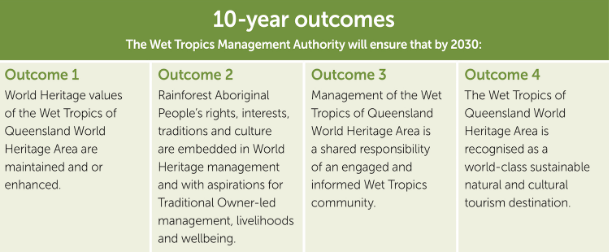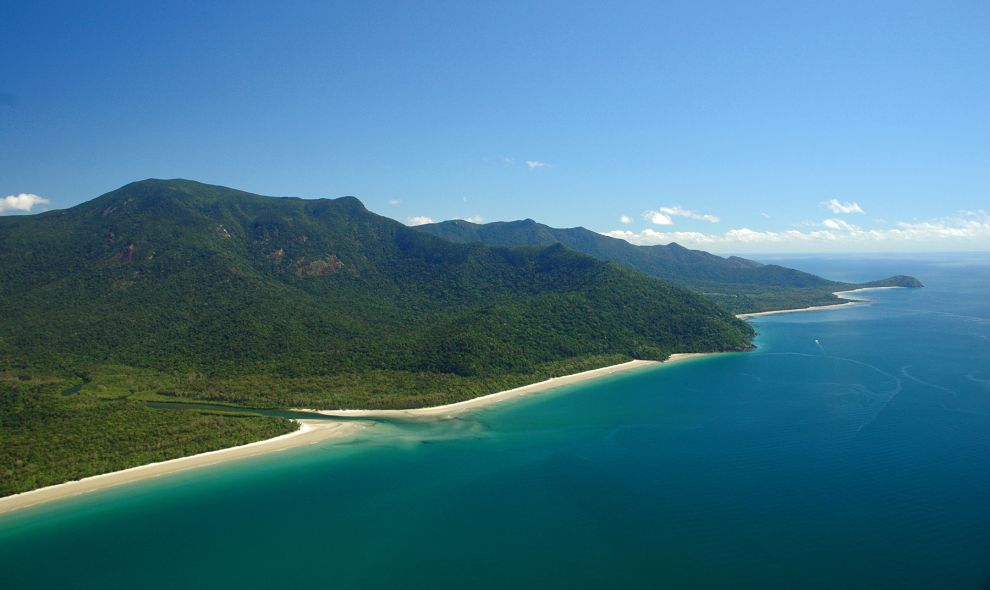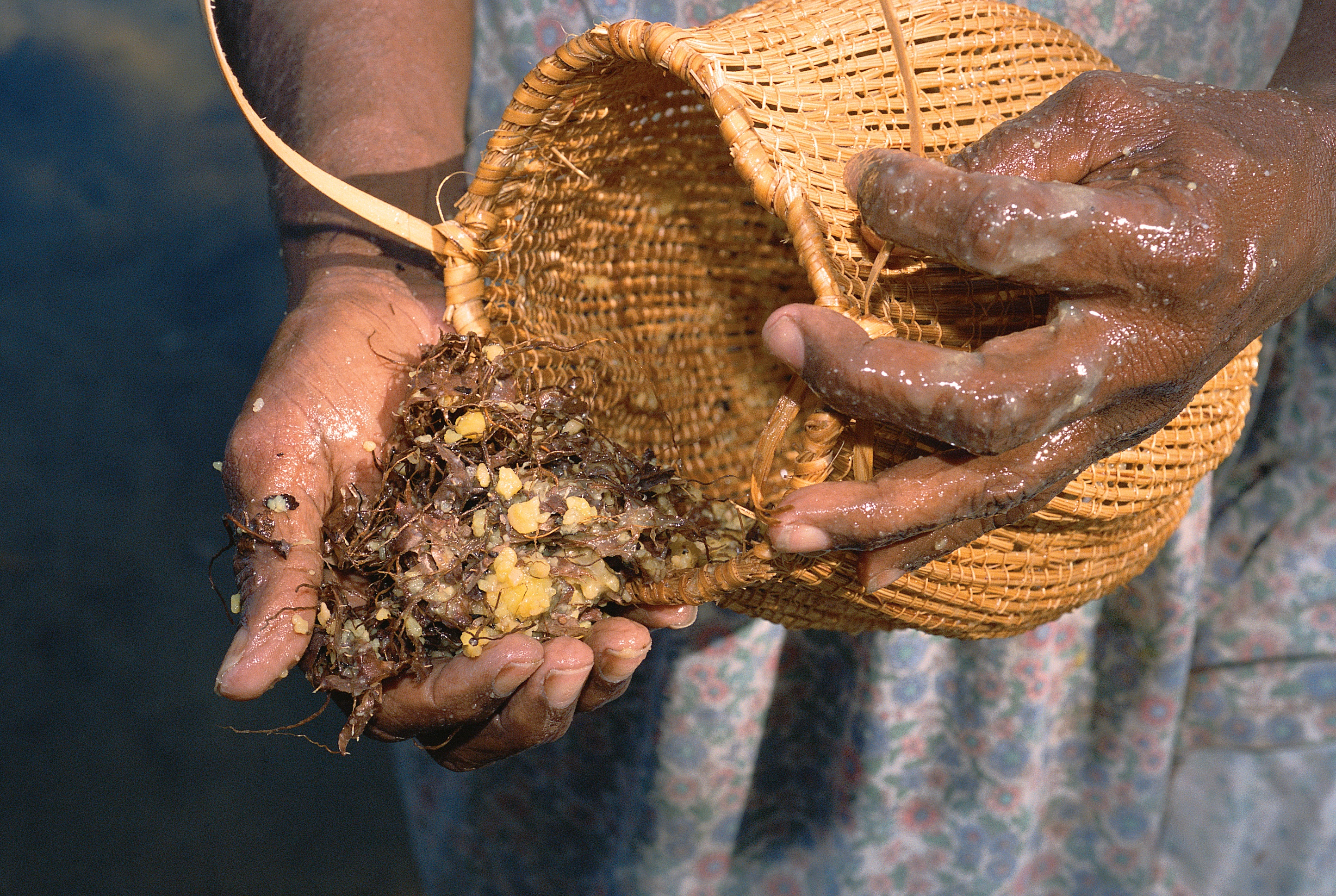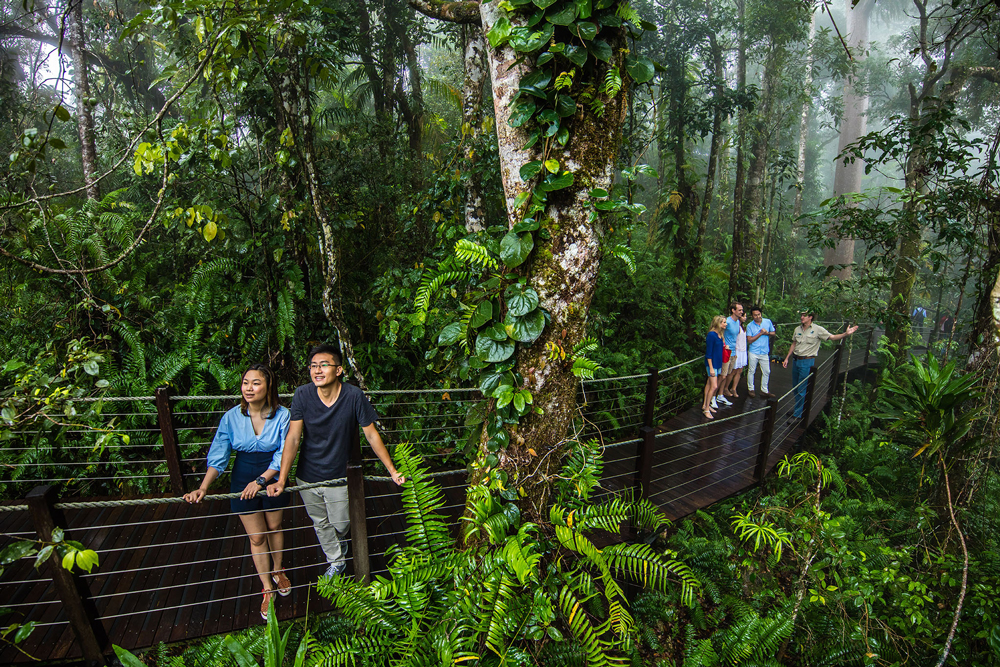
- Wet Tropics Management
- Legislative framework
- Management partnerships
- Sustainable Tourism Plan
- Threats to the Area
- Research and a Learning Landscape
- How can I help?
The Strategic Plan identifies four key performance indicators (KPIs) against the four outcomes to be achieved. These outcomes are the ‘big things’ the Authority wants to collectively achieve to improve management of the Wet Tropics of Queensland World Heritage Area by 2030, and include some broad indicators that will quantify (and the KPIs qualify) our progress towards achieving these. The Strategic Plan identifies a suite of actions that could be implemented to achieve these outcomes, however not all actions may need to be delivered to achieve these outcomes.

As the Strategic Plan will be delivered in partnership, the KPIs have been developed to measure success in a way that is meaningful to all our partners (i.e. will help to achieve individual and organisational goals of partners).
The Authority will report annually on progress against achieving these outcomes through our annual report. Major reviews will occur after five years (2025) and after 10 years (2030). This will inform ongoing adaptive management of delivery of the Strategic Plan, and indicate what role the Authority played in achieving these outcomes, where we might need to refocus our efforts, or simply do better.
It should be noted that baselines for a number of indicators may need to be established so that we can measure our progress. The Authority will be responsible for this body of work.
Success for achieving this outcome by 2030 is that trends for the condition of World Heritage values will remain stable, and may improve in some degraded areas of Zone B and C. We will adopt the measures used in periodic reporting by the Australian Government to the UNESCO World Heritage Centre. Examples of possible measures include:

Success for achieving this outcome by 2030 is that Rainforest Aboriginal People are strongly involved in management of the Wet Tropics of Queensland World Heritage Area in partnership with the Queensland and Commonwealth governments. This arrangement will likely be enabled through implementation of the Regional Agreement, and will involve a broad range of approaches that increase the involvement of Rainforest Aboriginal People directly in land management, and also increase the range of opportunities where Rainforest Aboriginal People can improve wellbeing and access economic benefits. Examples of possible measures include:

Success for achieving this outcome by 2030 is that there is a net increase in active community involvement in the management of the Wet Tropics of Queensland World Heritage Area (e.g. this would mean a net gain of capacity in volunteer groups who are actively engaged in management). Examples of possible measures include:

Success for achieving this outcome by 2030, the Wet Tropics of Queensland World Heritage Area will be recognised nationally and globally as a must-see natural and cultural tourism destination and an example of best practice World Heritage presentation (where the visitor experience is rich, enjoyable, and fosters a sense of responsibility to care for the Area). The Authority will advance opportunities for people to better appreciate and understand the special values and attributes of the World Heritage Area, and create pathways for Rainforest Aboriginal People to participate more in tourism and presentation activities across the World Heritage Area. Examples of possible measures include:
